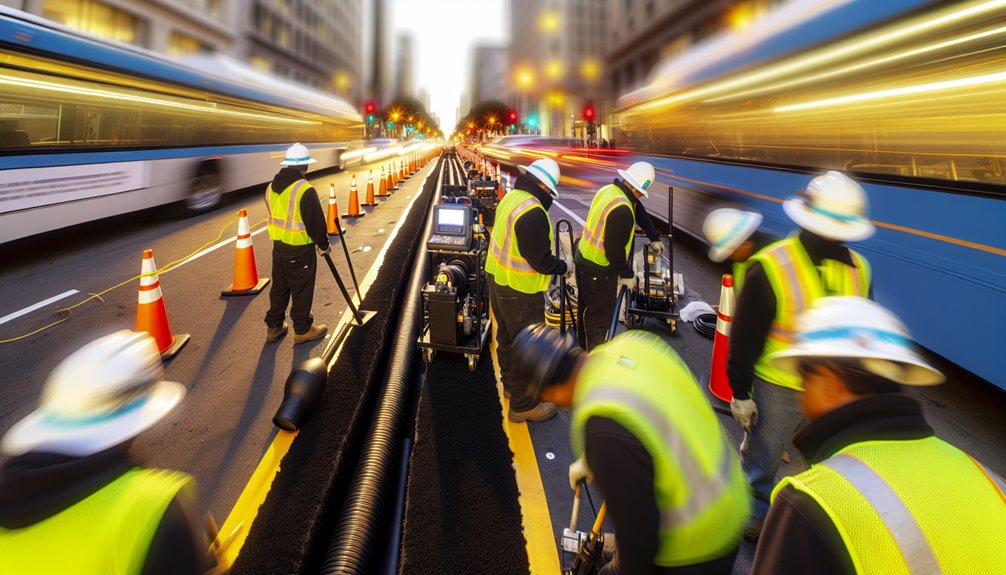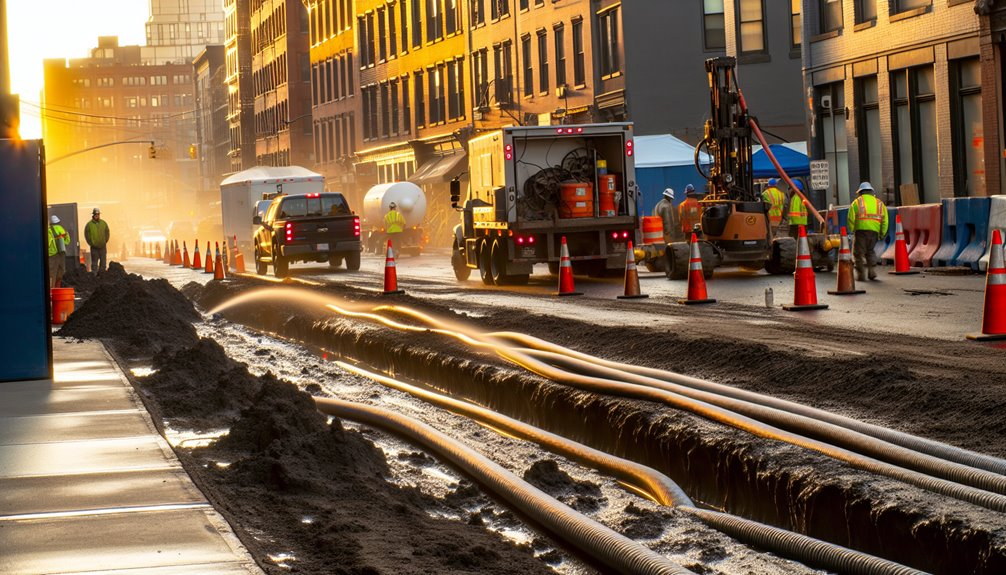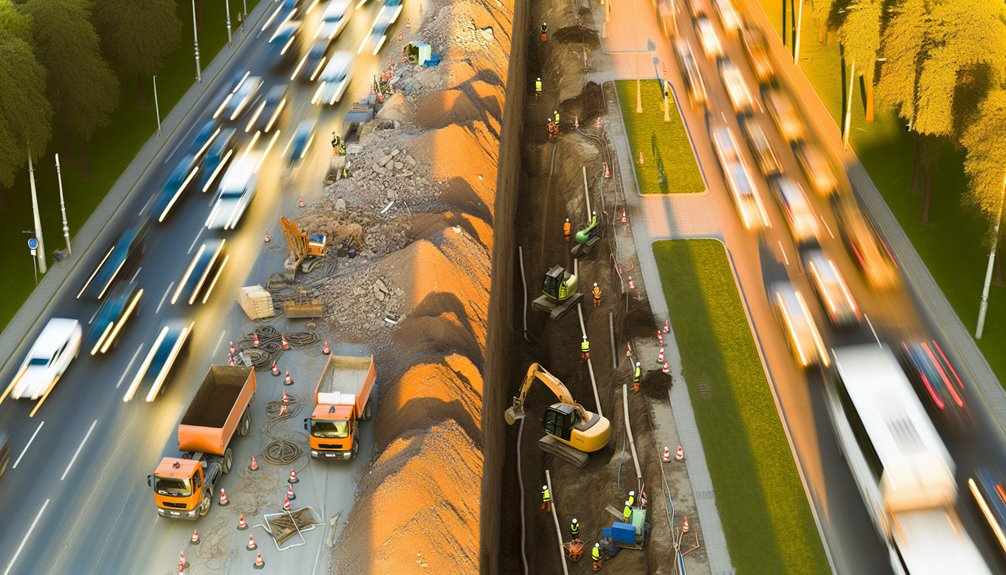You’re under pressure to keep traffic moving while replacing critical utilities. Start by targeting off-peak windows, phasing compact work zones, and syncing lane closures with signal timing and transit priority. Use trenchless methods, modular prefabrication, and rapid-restoration materials to cut hours, not days, from impacts. Feed real-time field and traffic data into decision triggers, and keep businesses informed with map-based updates. The payoff is measurable reliability—if you structure governance and metrics right…
Smarter Planning for Congested Corridors
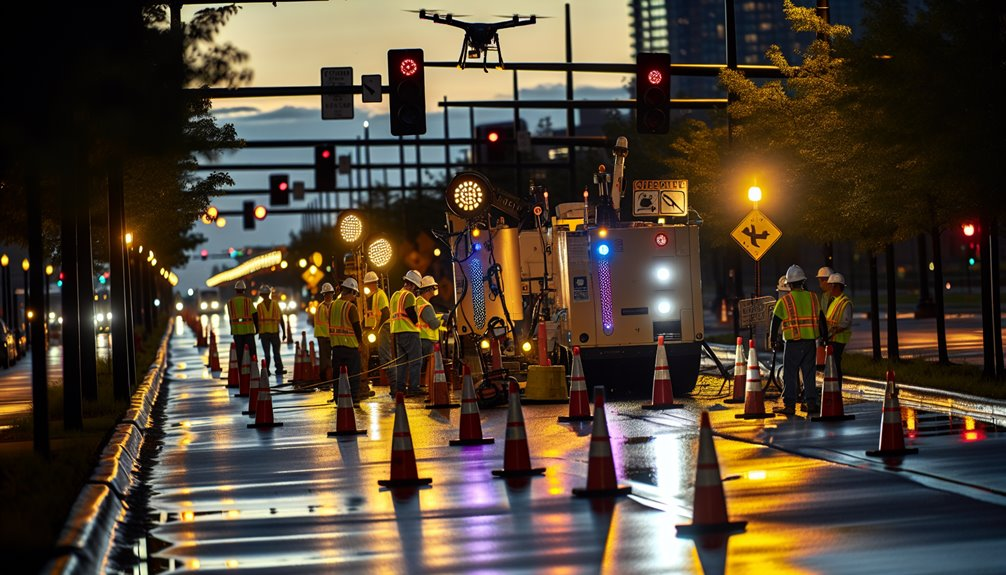
Although every corridor has unique constraints, you’ll accelerate progress by grounding plans in real-time data and clear stakeholder priorities. Start by integrating traffic modeling with sensor feeds, probe data, and transit headways to pinpoint pressure points and viable detours. Map origins, destinations, and curb uses so you protect access for residents, businesses, and emergency services. Use demand management to shift trips across modes and routes; align incentives with employers, delivery fleets, and campus partners to reduce peak loads.
Build a unified scenario playbook: define triggers, thresholds, and decision rights so crews, agencies, and community leaders act in sync. Validate plans with small pilots, measure queue lengths and travel times, then iterate. Communicate early and often, showing how your plan preserves mobility and respects everyone’s daily rhythms.
Off-Peak Scheduling and Phased Work Zones
With your scenario playbook and real-time insights in hand, shift execution to off-peak windows and phased work zones that minimize friction while keeping crews productive. You’ll stage tasks to coincide with demand troughs, prioritize high-impact segments, and compress durations through tight handoffs. Nighttime operations reduce conflicts with commuters, while calibrated lane reductions preserve throughput and safety. Define phases by utility, block face, or intersection, and lock scopes that can be finished within each window to prevent drift.
- Fewer horns, calmer mornings—neighbors feel seen and respected.
- Shorter detours—drivers sense you’re on their side.
- Clear milestones—crews and businesses share wins.
Set performance triggers: queue length thresholds, average speed targets, and work-hour caps. Communicate predictable start/stop times, detour maps, and ADA access. You’ll deliver certainty, pace, and shared pride.
Real-Time Coordination With Traffic and Field Data
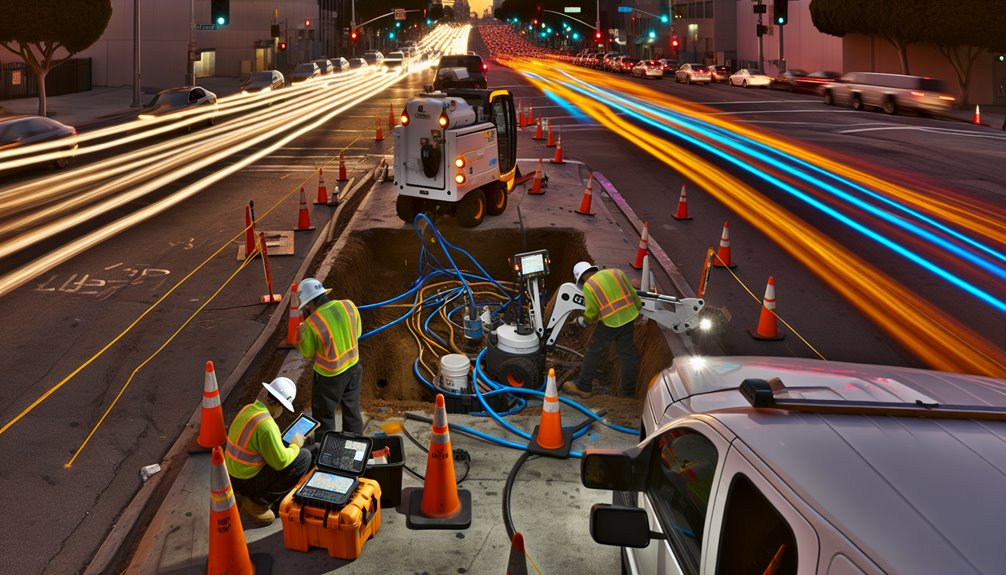
Because conditions shift by the minute, you’ll fuse live traffic feeds, probe speeds, signal phase data, and crew telemetry into a single operating picture that drives on-the-fly decisions. You’ll apply sensor fusion to reconcile conflicting inputs, filter noise, and surface trustworthy cues. With predictive routing, you’ll redirect deliveries, detours, and crew moves before queues form, protecting bus headways and freight windows.
You’ll share KPIs—delay minutes avoided, travel time reliability, near-miss reductions—so residents, operators, and regulators see tangible gains. Geofenced alerts will synchronize lane closures with signal timing, tow availability, and transit priority to keep vulnerable corridors moving. Field supervisors will confirm updates via mobile forms and photos, closing the loop. Together, you’ll act as one network, minimizing disruption while meeting safety and productivity targets.
Modular Methods and Rapid Restoration Techniques
Even under intense demand, you standardize work into modular building blocks—prefab vaults, trenchless segments, quick-connect joints, and plug-and-play cabinets—so crews execute in repeatable sprints that compress outage windows and lane occupation.
You stage prefabricated modules, pretest components, and sequence activities by takt time to cut mean restoration from hours to minutes. Portable splice kits and color-coded harnesses let techs finalize ties without bespoke tooling. You measure cycle times, first-pass yield, and reinstatement SLAs to verify gains.
- Fewer cones, faster reopenings—neighbors feel seen, not sidelined.
- Shorter outages—businesses keep payrolls steady and lights on.
- Predictable moves—drivers regain trust in your schedule.
You also prepack pavement restoration: rapid-set concrete, infrared asphalt reheats, and reusable steel plates. Lanes reopen early, while compressive strength reaches spec off-traffic.
Community Engagement and Transparent Communications
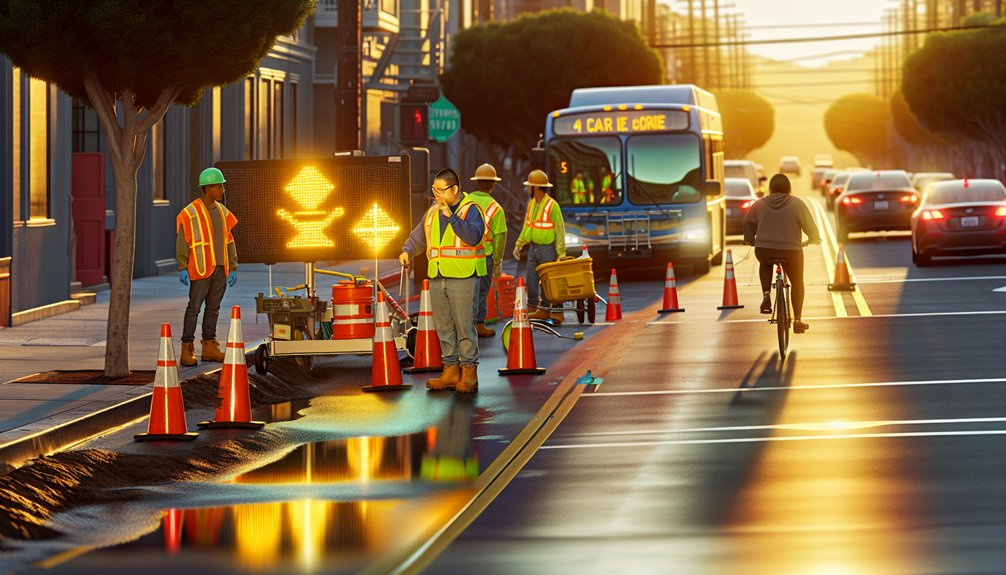
Modular speed only matters if people know what’s happening and why. You build trust when you explain decisions, quantify impacts, and invite dialogue.
Use stakeholder workshops to surface access needs, delivery windows, and safety concerns; translate those inputs into clear timelines and block-by-block milestones. Publish daily updates with lane status, noise windows, and detour performance metrics. Share before/after traffic counts, queue lengths, and incident rates so people see progress, not promises.
Prioritize two-way channels: SMS alerts for urgent changes, map-based dashboards for planning, and on-site ambassadors for quick fixes. Commit to response SLAs and log resolutions publicly. Coordinate with schools, transit, and storefronts to sequence work around peak periods. When you close the loop, you don’t just inform—you belong with the community you serve.
Conclusion
We cut disruption without sacrificing progress, and at Boring Bros I’m proud of how we plan smarter for congested corridors, schedule work off‑peak, and phase zones to keep traffic moving. We fuse real‑time traffic and field data to time lane closures, signals, and transit priority; use trenchless methods, modular prefabrication, and rapid‑restoration materials to shorten windows; and share clear, map‑based updates so residents, businesses, and emergency services stay informed. We track performance triggers and feedback, iterate, and—most importantly—restore access faster while proving reliability and building trust with every project. I’d love to tell you more about how we can help your next job go smoothly—visit boringbro.com or call me at (954) 639-6167.

